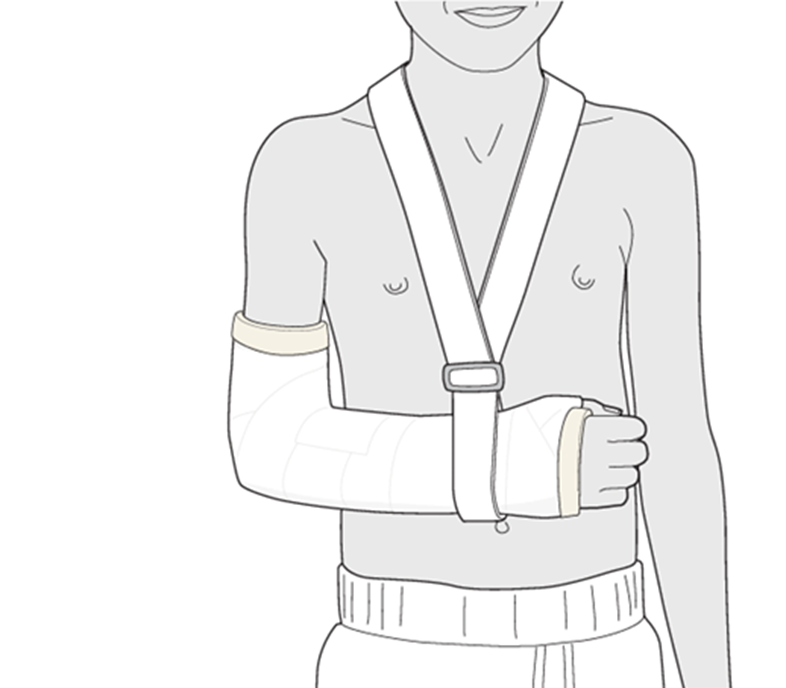A nurse is collecting data from a client who had a long arm cast applied 2 hr. ago. Which of the following findings of the affected extremity should the nurse report to the provider immediately?
The client's fingers are cool to the touch.
The client reports severe itching under the cast.
The client's capillary refill is 3 seconds.
The client reports increased pain at the area of the fracture.
The Correct Answer is A
Choice A Reason:
The client's fingers are cool to the touch is correct. Coolness of the fingers within a short time after a cast application can indicate compromised circulation or potential compartment syndrome, which requires urgent attention to prevent tissue damage or loss of function. It suggests impaired blood flow to the fingers, which is a serious concern requiring immediate evaluation by the provider.
Choice B Reason:
The client reports severe itching under the cast is incorrect. While itching can be uncomfortable, it might not pose an immediate threat. Itching can commonly occur as the skin heals and can be managed through non-invasive means.
Choice C Reason:
The client's capillary refill is 3 seconds is incorrect. A capillary refill of 3 seconds is slightly prolonged but doesn't typically indicates an immediate emergency. However, if this finding worsens or if combined with other concerning symptoms, it might warrant further assessment.
Choice D Reason:
The client reports increased pain at the area of the fracture is incorrect. Increased pain after a cast application can be expected initially, especially within 2 hours of the procedure. However, persistent or severe pain could indicate issues like poor alignment, swelling, or other complications. While it's important to address pain, it might not require immediate reporting unless accompanied by other concerning symptoms.

Nursing Test Bank
Naxlex Comprehensive Predictor Exams
Related Questions
Correct Answer is ["A","C","D"]
Explanation
Choice A Reason:
Maintaining skin integrity over the blisters is correct. Blisters form as a protective mechanism for the skin underneath. Popping or breaking blisters increases the risk of infection as it exposes the raw skin to bacteria and other contaminants.
Choice B Reason:
Applying ice to the larger blisters is incorrect.
Reason: Applying ice directly to a burn, especially to blisters, can further damage the skin and exacerbate the injury. Ice can cause additional skin damage and can potentially increase pain and delay healing.
Choice C Reason:
Administering ibuprofen for pain is correct. Ibuprofen is an effective over-the-counter pain reliever that can help manage the discomfort caused by a minor burn. It also has anti-inflammatory properties that can reduce swelling associated with burns.
Choice D Reason:
Running cool water over the affected area is correct. Running cool (not cold) water over the burn helps to cool down the burned area, soothes the pain, and helps prevent further damage to the skin. It's recommended to run water over the burn for around 10-15 minutes to effectively cool the area.
Choice E Reason:
Allowing the affected area to remain open to air is incorrect. Keeping a minor burn uncovered can increase the risk of infection as it exposes the burn to external contaminants. Covering the burn with a sterile, non-stick dressing can protect it from further damage and reduce the risk of infection.
Correct Answer is B
Explanation
Choice A Reason:
The client had a hemorrhoidectomy 1 year ago is appropriate. While hemorrhoids involve bleeding in the anal area, the blood from hemorrhoids is usually visibly present and not considered "occult" or hidden. A history of hemorrhoidectomy is less likely to cause a false-positive occult blood test result as the bleeding is typically visible.
Choice B Reason:
The client takes ibuprofen for headaches is correct. Nonsteroidal anti-inflammatory drugs (NSAIDs) like ibuprofen can irritate the gastrointestinal tract, leading to small amounts of bleeding. This bleeding, although not typically visible, can be detected by occult blood tests, resulting in a false-positive result
Choice C Reason:
The client has a history of breast cancer is incorrect. A history of breast cancer, in itself, is not directly related to gastrointestinal bleeding that would lead to a false-positive result in an occult blood test. Occult blood screening tests primarily detect bleeding from the gastrointestinal tract.
Choice D Reason:
The client consumed citrus juice 3 days before the test is incorrect. Consumption of citrus juice is not known to cause false-positive results in occult blood screening tests. These tests are designed to detect blood specifically from the gastrointestinal tract and aren't affected by citrus juice consumption.
Whether you are a student looking to ace your exams or a practicing nurse seeking to enhance your expertise , our nursing education contents will empower you with the confidence and competence to make a difference in the lives of patients and become a respected leader in the healthcare field.
Visit Naxlex, invest in your future and unlock endless possibilities with our unparalleled nursing education contents today
Report Wrong Answer on the Current Question
Do you disagree with the answer? If yes, what is your expected answer? Explain.
Kindly be descriptive with the issue you are facing.
